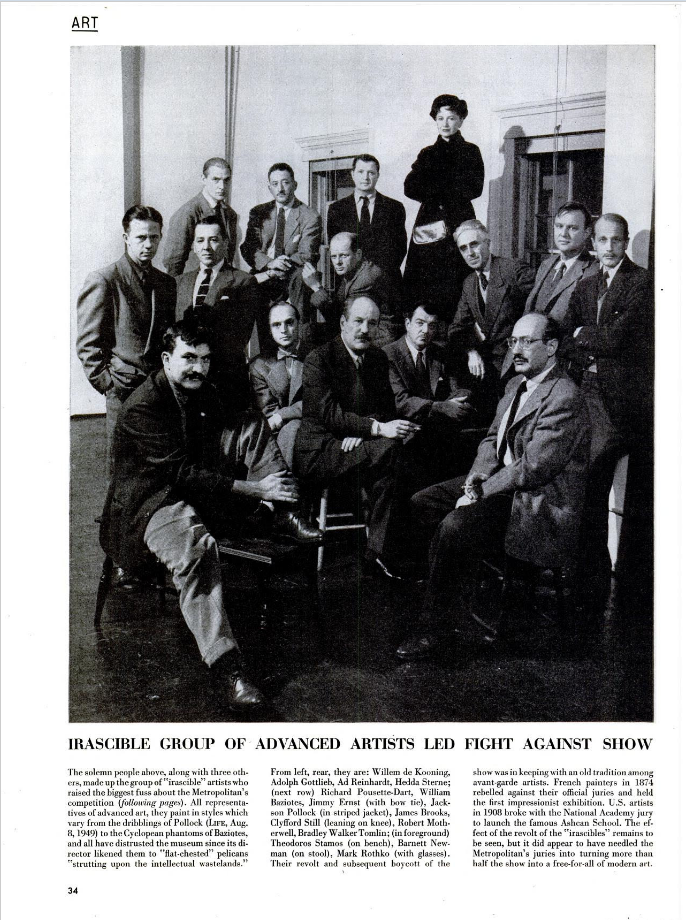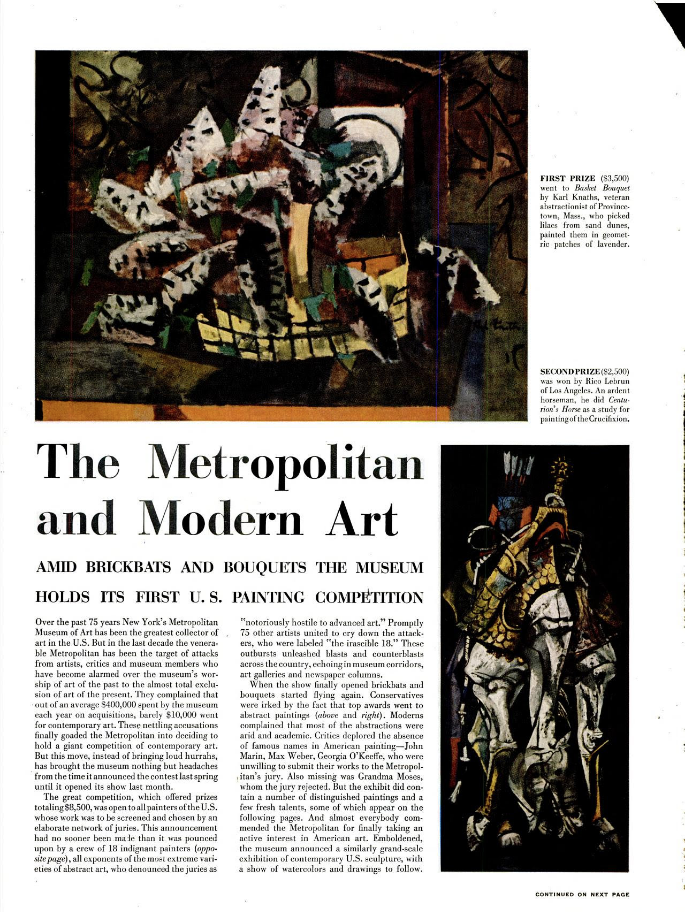The photo that has become known as “The Irascibles” was taken in 1950 as part of the press coverage of a protest lodged by a small group of artists against the very powerful and prominent Metropolitan Museum of Art in New York. The artists in the photo, and thirteen others who are not in the picture including Weldon Kees, signed on to protest an exhibition titled “American Painting Today - 1950” that the museum organized. The idea to protest the exhibition was put forward by Adolph Gottlieb who is seen in the back row, center, between Willem de Kooning and Robert Motherwell.
Gottlieb presented the idea on April 23, 1950 at the end of a 3-day roundtable discussion among about 25 colleagues. After the roundtable sessions ended, Gottlieb noted that the Metropolitan Museum of Art was organizing the juried exhibition, sponsored by Pepsi Cola and that the jurors were among the most conservative in the country. In light of that, Gottlieb suggested that his colleagues join him in refusing to submit their art to the exhibition and wrote out a draft. Gottlieb continued to revise the original draft over the next weeks, consulting primarily with Barnett Newman and Ad Reinhardt. On May 21, 1950, a typed final draft was presented and agreed to by 18 painters and ten sculptors, known going forward as the “Irascible 18”. An interesting artifact of this time was a letter that Adolph Gottlieb sent to Weldon Kees after the photo session, describing the negotiation between Life and the Irascibles.
“I suppose you have seen the Life article on the Met show. Too bad you were not in it Weldon, you are even more photogenic than the rest of us. Did you know Life wanted us to pose on the steps of the Met, each of us holding one of our paintings? We refused and after considerable negotiating and numerous meetings on our part, all of which took about 10 days, Life capitulated by agreeing to a straight shot in the studio…
the picture turned out well, but was not worth the trouble. I think they definitely got the idea that we do not trust Life, that we disagree with its way of handling art stories, and that we are completely uncooperative, and don’t take their lousy magazine seriously despite all its publicity.”




